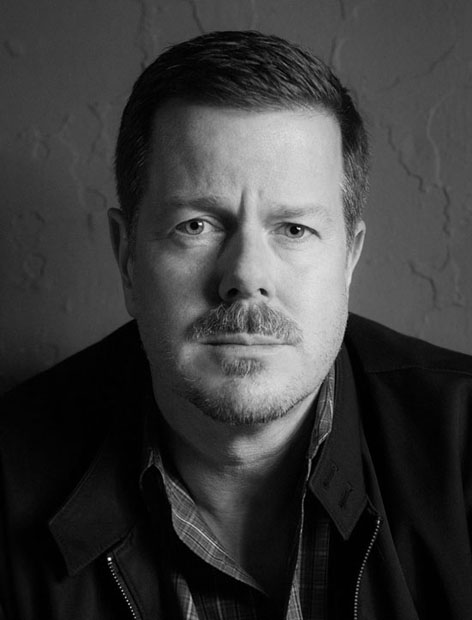
© Jim Newberry
KEN VANDERMARK SOLO "MARK IN THE WATER"
KEN VANDERMARK + AGUSTÍ FERNÁNDEZ
Martes 14 de mayo, Jamboree, 20:00h y 22:00h
GIRA COMPLETA:
9/5/2013 Klub Kino Gric, Zagreb (Croacia)
10/5/2013 La Médiathèque, Mons (Bélgica)
11/5/2013 Culture Center Drugstore, Belgrado (Serbia)
12/5/2013 CK13, Novi Sad (Serbia)
13/5/2013 Klub Dragon, Poznan (Polonia)
14/5/2013 + Agustí Fernández, Jamboree, Barcelona
“Mark in the
Water” (Not two records, 2011) es el segundo álbum de Ken Vandermark en
solo (el primero, "Furniture Music", fue publicado por Okka en 2003).
Diez piezas de música seleccionada entre los temas del concierto que
realizó el 29 de noviembre de 2010 en la sala Alchemia de Cracovia.
A veces
cuando escuchas un cd grabado en directo durante un concierto que te
gustó mucho te sientes decepcionado, sin el ambiente del escenario, sin
el sentimiento de comunión entre el artista y la audiencia, la magia y
la energía han desaparecido y la grabación parece simplemente correcta.
Bien, pues este no es el caso.
Durante el
concierto tocó una serie de “retratos” dedicados a los más influyentes
innovadores de los instrumentos de lengüeta (Brotzmann, McPhee, Braxton,
Lacy, Hawkins, entre otros) y en medio “piezas abiertas”. La estrategia
ideada para el concierto no fue la que finalmente dio forma al álbum,
donde sólo hay tres de los retratos y siete piezas abiertas. Una
selección realizada por el propio artista, que analizando el material
grabado decidió que algunos de los resultados no eran lo suficientemente
satisfactorios.
Entre el
material considerado digno para aparecer en el cd, encontramos solos de
saxo tenor como "Dekooning" (retrato de Coleman Hawkins) y "Looking
Back" (para Joe McPhee). Ambos con un profundo sentimiento, pasión y
madurez. Una pieza para Bb clarinete "White Lemon" (para Jimmy Giuffre)
que cautiva con una melodía delicada, elegante, sencilla y tranquila. En
clara oposición con las notas agudas, estridentes y penetrantes del
mismo instrumento que parecen constantemente apresuradas en "Burning
Air" (para John Carter). La lista completa incluye retratos de Evan
Parker, Coleman Hawkins y Anthony Braxton y piezas abiertas dedicadas a
Peter Brötzmann, Jimmy Giuffre, John Carter, Eric Dolphy, Steve Lacy,
Joe McPhee y, al único del grupo que no toca un instrumento de viento,
Fred McDowell. Cuatro piezas en saxo tenor y clarinete bajo, dos en Bb
clarinete.
Tanto cuando
toca piezas abiertas como retratos, lo que realmente hace Ken Vandermark
es mirarse al espejo y dibujar un autorretrato. Y este cuadro nos da la
imagen de un músico excelente, un notable artista de alma sensible y
apasionado como quien más por la música. Un mero capítulo de su viaje
musical, un documento de su plenamente consciente desarrollo como
artista y músico. Un dibujo de una estela en el agua (tratando de
capturar y fijar lo que nunca permanece igual). Me gustó el concierto,
me gusta el álbum.
“Entras, te plantas directamente frente al otro tipo, le miras a los ojos y le dices la verdad”, James Cagney, On the process of acting (sacado del texto que acompaña al cd). (Free) Jazz Alchemist
